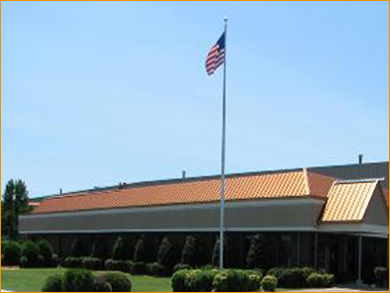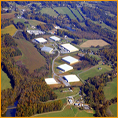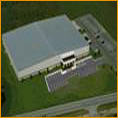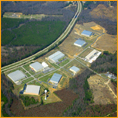4th Quarter 2011 Hotline
Market Watch
Southern Industrial Development
by Joe A. Hollingsworth, Jr.
In the past, a gauge often used for future industrial space needs was watching the total employment number for manufacturing and logistics. When more people were being hired, expansions across the board began to take shape. However, this has significantly changed.
For centuries, the sole means to expand production was the hiring of more individuals. A fixed number of widgets could be made by a single individual with very little variance for skill; the math was a simple linear growth in production for workers added to the process.
However, as recently as about two hundred years ago, that simple linear relationship began to turn more convex as machinery and capital goods became a very important aspect of growing production. Suddenly, the means to grow production could be more machines not just another hired individual, and, since the dawning of this avenue for growth, the curve has continued to become more and more convex.
While an old and constant phenomenon, it’s come to the forefront over the last six months. The Fed’s recent release of bank lending – combined with the astounding cash balances on Corporate America’s books – show that companies are
borrowing and investing but just on equipment, not people. The Fed’s report on business lending shows “robust” loan growth in mid-size companies as lending is up 6.2% from the year prior. Loan officers reported that loan expansion to mid-size, growing companies was above expectations and continued to grow even during a turbulent summer, making August the highest rate of growth in four years.
The key difference was that companies were borrowing to replace aging equipment, buy new machines and software, and purchase more inventories. The loan officers relayed that very little, if any, of the loan volume was supporting activities that would create jobs domestically.
It is for this reason – and the fact that consumption of produced goods is no longer a domestic function but a global function – that job growth is becoming a poorer and poorer barometer for industrial space while purchases of equipment is becoming a stronger and stronger predictor of future industrial demand. Eventually, companies reach the limits of replacing their capital stock and begin expanding it, both for domestic consumers and consumers abroad.
Whereas in the past thirty years, it was hiring that was the early gauge to expansion; but, now, it seems equipment purchases more accurately forecast increasing demand for industrial space. This reflects a continuing tepid growth or slight increase in total industrial space needs until mid 2012 when the direction of the Fall 2012 Elections becomes more clear.



